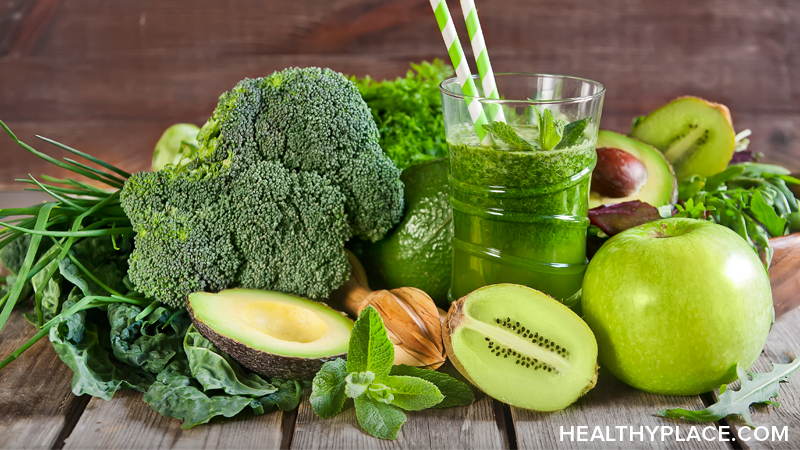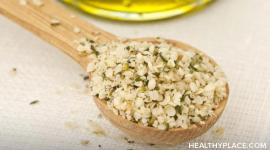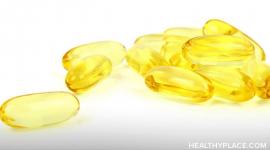Vitamin E

Vitamin E helps treat Alzheimer's Disease, menopause, and diabetes. Learn about the usage, dosage, side-effects of Vitamin E.
Common Forms:alpha-tocopherol, beta-tocopherol, D-alpha-tocopherol, delta-tocopherol, gamma-tocopherol
- Overview
- Uses
- Dietary Sources
- Available Forms
- How to Take It
- Precautions
- Possible Interactions
- Supporting Research
Overview
Vitamin E is a fat-soluble vitamin present in many foods, especially certain fats and oils. It is one of a number of nutrients called antioxidants. Some other well known antioxidants include vitamin C and beta-carotene. Antioxidants are nutrients that block some of the damage caused by toxic by-products released when the body transforms food into energy or fights off infection. The build up of these by-products over time is largely responsible for the aging process and can contribute to the development of various health conditions such as heart disease, cancer, and a host of inflammatory conditions like arthritis. Antioxidants provide some protection against these conditions and also help reduce the damage to the body caused by toxic chemicals and pollutants.
Vitamin E deficiency can be seen in people unable to absorb fat properly. Such conditions include pancreatitis (inflammation of the pancreas), cystic fibrosis, and biliary diseases (illnesses of the gallbladder and biliary ducts). Symptoms of deficiency include muscle weakness, loss of muscle mass, abnormal eye movements, impaired vision, and unsteady gait. Eventually, kidney and liver function may be compromised. In addition, severe vitamin E deficiency can be associated with serial miscarriages and premature delivery in pregnant women.
Vitamin E Uses
Heart disease
Vitamin E helps prevent arteries from clogging by blocking the conversion of cholesterol into the waxy fat deposits called plaque that stick to blood vessel walls. Vitamin E also thins the blood, allowing for blood to flow more easily through arteries even when plaque is present. Studies in the last 10 years have reported beneficial results from use of vitamin E supplements as part of a prevention strategy for heart disease and other types of cardiovascular disease.
A large, important study of postmenopausal women, for example, suggested that vitamin E from foods may reduce the risk of death from stroke in postmenopausal women. The study results do not, however, support any need for supplementation with vitamin E or other antioxidant vitamins as part of a preventive strategy.
There is some evidence for the use of supplemental vitamin E as a treatment for atherosclerosis. For example, a 2-year study of men with a history of stroke compared aspirin with and without vitamin E and found that vitamin E with aspirin significantly reduced the tendency of plaque to stick to vessel walls and decreased the risk of stroke.
Still, when looked at collectively, results of studies have been mixed and a lot more evidence is needed to know if there are benefits to supplementing with vitamin E, whether for prevention or for treatment of cardiovascular disease. Four large, well-designed trials are currently in progress and should help resolve this question.
Cancer
While no firm conclusions can be drawn about vitamin E's ability to protect against cancer, it has been noted that people with cancer often have lower levels of vitamin E. Plus, population based trials (observing groups of people over long periods of time) suggest that diets rich in antioxidants, including vitamin E, may be connected to a reduced risk of certain types of cancer, such as colon cancer. Supplementation with vitamin E, though, does not appear to improve risk of cancer.
Laboratory studies have generally shown that vitamin E inhibits the growth of some cancers in test tubes and animals, particularly hormone responsive cancers such as breast and prostate. There is reason to believe, therefore, that, for these types of cancers at least, supplementation may prove beneficial for both prevention and treatment. .
Despite the encouraging results from test tube and animal studies, however, research on people has been much less promising. A large, important study called the Iowa Women's Health Study, for example, involving nearly 35,000 women, looked at the dietary intake of antioxidants and occurrence of breast cancer after menopause. They found little evidence that vitamin E has a protective effect. More research is needed before coming to any firm conclusions about whether added vitamin E has an impact on cancer and, if so, which forms of the vitamin are most effective for treatment and what optimal dosing would be.
Researchers have also pointed to the fact that the body's antioxidant defense system is complex, which suggests that focusing on one vitamin in isolation may not be the best approach. This may be why dietary forms of antioxidants, since they are generally taken together from foods, may be the best way to try to stave off cancer.
Photodermatitis
This condition involves an allergic type reaction to the UV rays of the sun. An 8-day study comparing treatment with vitamins C and E to no treatment found that the vitamin group became significantly less sensitive to the sun. Another study, lasting for 50 days, also showed a protective effect of the combination of vitamins C and E to UV rays.
Osteoarthritisis
A few studies suggest that vitamin E may be helpful in both the treatment (pain relief, increased joint mobility) and prevention (at least in men) of osteoarthritis. In a study comparing vitamin E with diclofenac, a non-steroidal anti-inflammatory drug (NSAID) used to treat osteoarthritis, the two were found to be equally effective.
Vitamin E for Alzheimer's Disease
There are several reasons why vitamin E might help treat Alzheimer's Disease. The fat soluble vitamin readily enters the brain and exerts its antioxidative properties. Oxidative stress is believed to contribute to the development of Alzheimer's Disease; therefore, again, it makes at least theoretical sense that antioxidants, like vitamin E, help prevent this condition. In fact, studies have suggested that vitamin E supplementation improves cognitive performance in healthy individuals and in those with dementia from causes other than Alzheimer's (for example, multiple strokes). In addition, vitamin E, together with vitamin C may prevent the development of Alzheimer's Disease.
Menopause
According to a review article on alternatives to hormone replacement therapy (HRT) for women with breast cancer, vitamin E is the most effective option for the reduction of hot flashes for this group of women. Presumably, this would be true for other women not taking HRT because they cannot or prefer not to. Vitamin E also helps reduce other long term risks associated with menopause such as Alzheimer's, macular degeneration (see Eye health below), and cardiovascular disease.
Eye Health
Because of it's antioxidant action, vitamin E may help to protect against cataracts (clouding of the lens of the eye) and age related macular degeneration (ARMD, a progressive deterioration in the retina, the back part, of the eye). Both of these eye disorders tend to occur as people age. These conditions seriously compromise eyesight and ARMD is the number one cause of blindness in the United States. In order to minimize risk of ARMD, research reviews advocate diets high in vitamins C and E and carotenoids, especially spinach, kale, and collard greens. Taking supplements as a preventive measure, as opposed to getting vitamin E from food sources, remains controversial.
Uveitis is another eye disorder for which the antioxidant vitamins C and E may be helpful. A study of 130 patients with uveitis compared treatment with oral vitamins C and E to placebo and found that those who took the vitamins had significantly better visual clarity than those in the placebo group. Uveitis is inflammation of the uvea, the middle layer of the eye between the sclera (white outer coat of the eye) and the retina (the back of the eye). The uvea contains many of the blood vessels that nourish the eye. Inflammation of this area, therefore, can affect the cornea, the retina, the sclera, and other important parts of the eye. Uveitis occurs in acute and chronic forms.
Diabetes
People with diabetes tend to have low levels of antioxidants. This may explain, in part, their increased risk for conditions such as cardiovascular disease. Vitamin E supplements and other antioxidants may help reduce the risk of heart disease and other complications in people with diabetes. In particular, antioxidants have been shown to help control blood sugar levels, to lower cholesterol levels in those with type 2 diabetes, and to protect against the complications of retinopathy (eye damage) and nephropathy (kidney damage) in those with type 1 diabetes.
Vitamin E may also play a role in the prevention of diabetes. In one study, 944 men who did not have diabetes at were followed for 4 years. Low levels of vitamin E was associated with an increased risk of becoming diabetic in that time course.
Pancreatitis
Oxidative stress plays a role in pancreatitis (inflammation of the pancreas). In fact, those with pancreatitis have low levels of vitamin E and other antioxidants. This may be due to lack of absorption of fat soluble vitamins (such as vitamin E) because the enzymes from the pancreas required to absorb fat are not functioning properly. Or, this may be due to poor intake because those with pancreatitis are not eating due to pain and need for bowel rest. Some experts relay that taking vitamin E and other antioxidants may help to reduce the pain and inflammation associated with pancreatitis.
Other
Vitamin E, along with other standard treatments, may also be beneficial for the following:
- Slowing the aging of cells and tissues
- Protecting from frostbite and other cold-induced injuries
- Diminishing the negative effects of environmental pollutants
- Improving anemia
- Speeding wound and burn healing
- Reducing scarring
- Lowering blood pressure
- Slowing progression of Parkinson's disease
- Easing premenstrual discomfort, especially breast tenderness
- Treating lupus
- Replacing necessary nutrients in those with inflammatory bowel disease, such as ulcerative colitis
- Avoiding miscarriage (also called spontaneous abortion), which may be associated with very low levels of this nutrient
- Helping weight gain and relieving oxidative stress in those with HIV or AIDS
Vitamin E Dietary Sources
The richest source of vitamin E is wheat germ. Other foods that contain a significant amount of vitamin E include liver, eggs, nuts (almonds, hazelnuts, and walnuts); sunflower seeds; corn-oil margarine; mayonnaise; cold-pressed vegetable oils, including olive, corn, safflower, soybean, cottonseed, and canola; dark green leafy vegetables like spinach and kale; greens (beet, collard, mustard, turnip) sweet potatoes; avocado, asparagus and yams.
Vitamin E Available Forms
Vitamin E refers to a family of eight related fat soluble compounds, the tocopherols and tocotrienols (in four different forms, alpha, beta, delta and gamma) Dosages are usually listed in international units (IUs). There are both natural and synthetic forms of vitamin E. Health care providers usually recommend natural vitamin E (d-alpha-tocopherol) or natural mixed tocopherols. The synthetic form is called dl-alpha-tocopherol.
Some clinicians prefer mixed tocopherols because it most closely represents whole foods.
Most vitamin E supplements are fat-soluble. However, water soluble E is available for people who have trouble absorbing fat, such as people with pancreatic insufficiency and cystic fibrosis.
Vitamin E is available in softgels, tablets, capsules, and topical oils. Doses for oral vitamin E generally range from 50 IU to 1,000 IU.
How to Take Vitamin E
Based on clinical trials, the recommended dose for disease prevention and treatment for adults is 400 to 800 IU/day. As with all supplements, it is important to check with a healthcare provider before giving vitamin E to a child.
Daily intakes of dietary Vitamin E are listed below. (Note: 1 mg vitamin E equals 1.5 IU.)
Pediatric
- Newborn to 6 months: 6 IU
- Infants 6 months to 1 year: 9 IU
- Children 1 to 3 years: 9 IU
- Children 4 to 8 years: 10.5 IU
- Children 9 to 13 years: 16.5 IU
- Adolescents 14 to 18 years: 22.5 IU
Adult
- Older than 18 years: 22.5 IU
- Pregnant females: 22.5 IU
- Breastfeeding females: 28.5 IU
Precautions
Because of the potential for side effects and interactions with medications, dietary supplements should be taken only under the supervision of a knowledgeable healthcare provider.
Vitamin E should be taken together with another antioxidant called selenium.
The Tolerable Upper Intake Limit (UL) for alpha-tocopherol is set at 1000 mg (1500 IU). Doses higher than this can cause nausea, gas, diarrhea, heart palpitations, and increase the tendency to bleed.
It is especially important that those who have high blood pressure or who are taking blood-thinners such as warfarin check with a healthcare provider before taking vitamin E supplements.
There is some concern that a diet rich in fish oil taken for many months may induce a deficiency of vitamin E. People who eat a diet high in fish or who take fish oil supplements may want to consider taking vitamin E supplements.
Vitamin E Possible Interactions
If you are currently being treated with any of the following medications, you should not use vitamin E supplements without first talking to your healthcare provider.
Vitamin E and antidepressant medications, Tricyclic
Vitamin E inhibits the uptake by cells of the antidepressant desimpramine, which belongs to a class of drugs known as tricyclics. Other members of that class include imipramine and nortriptyline.
Vitamin E and Antipsychotic Medications
Vitamin E can inhibit the uptake by cells of the antipsychotic medication called chlorpromazine, which belongs to a class of drugs known as phenothiazines.
AspirinA study evaluating the effects of vitamin E and aspirin suggests that the combination appears to be safe and may benefit patients at risk for stroke.
AZT
Vitamin E may protect against toxicity and side effects from AZT, a medication used to treat HIV and AIDS.
Beta Blockers for high blood pressure
Vitamin E inhibits the uptake by cells of propranolol, a member of a class of medications called beta blockers used for high blood pressure. Other beta-blockers include atenolol and metoprolol.
Birth Control Medications
Vitamin E may provide antioxidant benefits to women taking birth control medications.
Chloroquine
Vitamin E can inhibit the uptake into cells of chloroquine, a medication used to treat malaria.
Cholesterol-lowering Medications
Cholesterol-lowering medications such as colestipol and cholestyramine, called bile-acid sequestrants, decrease the absorption of vitamin E. Gemfibrozil, a different type of cholesterol-lowering medication called a fibric acid derivative, may also reduce vitamin E levels. A third class of medications used to lower cholesterol levels known as statins (such as atorvastatin, pravastatin, and lovastatin), may reduce the antioxidant activity of vitamin E. On the other hand, the combination of vitamin E supplements with statins may help protect blood vessels from dysfunction.
Cyclosporine
Vitamin E may interact with cyclosporine, a medication used to treat cancer, reducing the effectiveness of both the supplement and the medication. However, there appears to be some controversy regarding the nature of this interaction; another study suggests that the combination of vitamin E and cyclosporine may actually increase the effects of the medication. More research is needed to determine the safety of this combination.
Hormone Replacement Therapy
Vitamin E supplements may benefit women taking hormone replacement therapy by improving lipid profiles.
Mebendazole
Simultaneous supplementation with vitamins A, C, E, and selenium significantly reduced the effectiveness of this vermifuge (treatment to eradicate intestinal worms) in a study.
Tamoxifen
Tamoxifen, a hormonal treatment for breast cancer, increases blood levels of triglycerides, increasing one's chances of developing high cholesterol. In a study of 54 women with breast cancer, vitamins C and E, taken along with the tamoxifen, counteracted this by decreasing low density cholesterol and triglyceride levels while increasing high density cholesterol. The antioxidants also enhanced the anti-cancer action of the tamoxifen.
Warfarin
Taking vitamin E at the same time as warfarin, a blood-thinning medication, increases the risk of abnormal bleeding, especially in vitamin K-deficient individuals.
Weight Loss Products
Orlistat, a medication used for weight loss and olestra, a substance added to certain food products, are both intended to bind to fat and prevent the absorption of fat and the associated calories. Because of their effects on fat, orlistat and olestra may also prevent the absorption of fat-soluble vitamins such as vitamin E. Given this concern and possibility, the Food and Drug Administration (FDA) now requires that vitamin E and other fat soluble vitamins (namely, A, D, and K) be added to food products containing olestra. How well vitamin E from such food products is absorbed and used by the body is not clear. In addition, physicians who prescribe orlistat may add a multivitamin with fat soluble vitamins to the regimen.
Supporting Research
Aberg F, Appelkvist EL, Broijersen A, et al. Gemfibrozil-induced decrease in serum ubiquinone and alpha- and gamma-tocopherol levels in men with combined hyperlipidaemia. Eur J Clin Invest. 1998;28(3):2352-2342.
Adhirai M, Selvam R. Effect of cyclosporin on liver antioxidants and the protective role of vitamin E in hyperoxaluria in rats. J Pharm Pharmacol. 1998;50(5):501-505.
Albanes D, Malila N, Taylor PR, et al. Effects of supplemental alpha-tocopherol and beta-carotene on colorectal cancer: results from a controlled trial (Finland). Cancer Causes Control. 2000;11:197-205.
Allard JP, Aghdassi E, Chau J, et al. Effects of vitamin E and C supplementation on oxidative stress and viral load in HIV-infected subjects. AIDS. 1998;13:1653-1659.
Altura BM, Gebrewold A. Alpha-tocopherol attenuates alcohol-induced cerebral vascular damage in rats: possible role of oxidants in alcohol brain pathology and stroke. Neurosci Lett. 1996;220(3):207-210.
Ames BN. Micronutrient deficiencies: A major cause of DNA damage. Ann NY Acad Sci. 2000;889:87-106.
Anderson JW, Gowri MS, Turner J,et al. Antioxidant supplementation effects low density lipoprotein oxidation for individuals with type 2 diabetes mellitus. J Amer Coll Nutr. 1999;18:451-461.
Babu JR, Sundravel S, Arumugam G, Renuka R, Deepa N, Sachdanandam P. Salubrious effect of vitamin C and vitamin E on tamoxifen-treated women in breast cancer with reference to plasma lipid and lipoprotein levels. Cancer Lett. 2002;151:1-5.
Belda JI, Roma J, Vilela C, Puertas FJ, Diaz-Llopis M, Bosch-Morell F, Romero FJ. Serum vitamin E levels negatively correlate with severity of age-related macular degeneration. Mech Ageing Dev. 1999;107(2):159-164.
Bhaumik G, Srivastava KK, Selvamurthy W, Purkayastha SS. The role of free radicals in cold injuries. Int J Biometeorol. 1995;38(4):171-175.
Bursell S, Clermont AC, Aiello LP, et al. High-dose vitamin E supplementation normalizes retinal blood flow and creatinine clearance in patients with type 1 diabetes. Diabetes Care. 1999;22(8):1245-1251.
Cai J, Nelson KC, Wu M, Sternberg P Jr, Jones DP. Oxidative damage and protection of the RPE. Prog Retin Eye Res. 2000;19(2):205-221.
Chang T, Benet LZ, Hebert MF. The effect of water-soluble vitamin E on cyclosporine pharmacokinetics in healthy volunteers. Clin Pharm & Ther. 1996;59(3):297-303.
Christen WG, Ajani UA, Glynn RJ, Manson JE, Schaumberg DA, Chew EC, Buring JE, Hennekens CH. Prospective cohort study of antioxidant vitamin supplement use and the risk of age-related maculopathy. Am J Epidemiol. 1999;149(5):476-484.
Ciavatti M, Renaud S. Oxidative status and oral contraceptive. Its relevance to platelet abnormalities and cardiovasular risk. Free Radic Biol Med. 1991;10(5)L325-338.
Clemente C, Caruso MG, Berloco P, Buonsante A, Giannandrea B, Di Leo A. Alpha-tocopherol and beta-carotene serum levels in post-menopausal women treated with transdermal estradiol and oral medroxyprogesterone acetate. Horm Metab Res. 1996;28(10):558-561.
Collaborative Group of the Primary Prevention Project. Low-dose aspirin and vitamin E in people at cardiovascular risk: a randomised trial in general practice. Lancet. 2001;357:89-95.
Corrigan JJ. The effect of vitamin E on warfarin-induced vitamin K deficiency. Ann NY Acad Sci. 1982;393:361-368.
Diaz MN, Frei B, Vita JA, Keaney JF. Antioxidants and atherosclerotic heart disease. N Engl J Med. 1997;337(16):408-416.
Eberlein-König B, Placzek M, Przybilla B. Protective effect against sunburn of combined systemic ascorbic acid (vitamin C) and d-alpha-tocopherol (vitamin E). J Am Acad Dermatol. 1998;38(1):45-48.
Emmert DH, Kircher JT. The role of vitamin E in the prevention of heart disease. Arch Fam Med. 1999;8(6):537-542.
Fahn S. A pilot trial of high dose alpha tocopherol and ascorbate in early Parkinson's disease. Ann Neurol. 1992;32:S128-S132.
Flood A, Schatzkin A. Colorectal cancer: does it matter if you eat your fruits and vegetables? J Natl Cancer Inst. 2000;92(21):1706-1707.
Fuchs J, Kern H. Modulation of UV-light-induced skin inflammation by D-alpha-tocopherol and L-ascorbic acid: a clinical study using solar simulated radiation. Free Radic Biol Med. 1998;25(9):1006-1012.
Gaby AR. Natural treatments for osteoarthritis. Altern Med Rev. 1999;4(5):330-341.
GISSI-Prevenzione Investigators. Dietary supplementation with n-3 polyunsaturated fatty acids and vitamin E after myocardial infarction: results of the GISSI-Prevenzione trial. Lancet. 1999;354:447-455.
Gogu S, Beckman B, Rangan S, et al. Increased therapeutic efficacy of zidovudine in combination with vitamin E. Biochem Biophys Res Commun. 1989; 165:401-407.
Greenberg ER, Baron JA, Tosteson TD, et al. A clinical trial of antioxidant vitamins to prevent colorectal adenoma. N Engl J Med. 1994;331:141-147.
Heart Outcomes Prevention Evaluation Study Investigators. Vitamin E supplementation and cardiovascular events in high-risk patients. N Engl J Med. 2000;342:154-160.
Helzlsouer KJ, Huang HY, Alberg AJ, et al. Association between alpha-tocopherol, gamma-tocopherol, selenium and subsequent prostate cancer. J Natl Cancer Inst. 2000 Dec 20;92(24):2018-2023.
Hodis HN, Mack WJ, LaBree L et al. Serial coronary angiographic evidence that antioxidant vitamin intake reduces progression of coronary artery atherosclerosis. JAMA. 1995;273(23):1849-1854.
Inal M, Sunal E, Kanbak G, Zeytinoglu S. Effects of postmenopausal hormone replacement therapy and alpha-tocopherol on the lipid profiles and antioxidant status. Clin Chim Acta. 1997;268(1-2):21-29.
Institute of Medicine. Dietary Reference Intakes for Vitamin C, Vitamin E, Selenium, and Carotenoids. 2000; National Academy Press.
Jacques PF. The potential preventive effects of vitamins for cataract and age-related macular degeneration. Int J Vitam Nutr Res. 1999;69(3):198-205.
Jänne PA, Mayer RJ. Chemoprevention of colorectal cancer. N Engl J Med. 2000;342(26):1960-1968.
Kim JM, White RH. Effect of vitamin E on the anticoagulant response to warfarin. Am J Cardiol. 1996;77(7):545-546.
Kimmick GG, Bell RA, Bostick RM. Vitamin E and breast cancer: a review.
Nutr Cancer. 1997;27(2):109-117.
Kitiyakara C, Wilcox C. Antioxidants for hypertension. Curr Opin Nephrol Hyperten. 1998;7:S31-S38.
Knekt P. Role of vitamin E in the prophylaxis of cancer. Ann Med. 1991;23(1):3-12.
Krauss RM, Eckel RH, Howard B, Appel LJ, Daniels SR, Deckelbaum RJ, et al. AHA Scientific Statement: AHA Dietary guidelines Revision 2000: A statement for healthcare professionals from the nutrition committee of the American Heart Association. Circulation. 2000;102(18):2284-2299.
Kushi LH, Fee RM, Sellers TA, Zheng W, Folsom AR. Intake of vitamins A, C, and E and postmenopausal breast cancer. The Iowa Women's Health Study. Am J Epidemiol. 1996;144(2):165-174.
Laight DW, Carrier MJ, Anggard EE. Antioxidants, diabetes and endothelial dysfunction. Cardiovasc Res. 2000;47:457-464.
Lamson DW, Brignall MS. Antioxidants in cancer therapy; their actions and interactions with oncologic therapies. Altern Med Rev. 1999;4(5):304-329.
Leske MC, Chylack Jr LT, He Q, et al. Antioxidant vitamins and nuclear opacities: the longitudinal study of cataract. Ophthalmology. 1998;105:831-836.
Loprinzi CL, Barton DL, Rhodes D. Management of hot flashes in breast-cancer survivors. Lancet. 2001;2:199-204.
Malafa MP, Neitzel LT. Vitamin E succinate promotes breast cancer tumor dormancy. J Surg Res. 2000 Sep;93(1):163-170.
Markesbery WR. Oxidative stress hypothesis in Alzheimer's Disease. Free Radical Biol Med. 1997;23:134-147.
Masaki KH, Losonczy KG, Izmirlian G. Association of vitamin E and C supplement use with cognitive function and dementia in elderly men. Neurology. 2000;54:1265-1272.
McAlindon TE, Felson DT, Zhang Y, et al. Relation of dietary intake of serum levels of vitamin D to progression of osteoarthritis of the knee among participants in the Framingham study. Ann Intern Med. 1996;125:353-359.
McCloy R. Chronic pancreatitis at Manchester, UK. Focus on antioxidant therapy. Digestion. 1998;59(suppl 4):36-48.
Meydani SN, Meydani M, Blumberg JB, et al. Assessment of the safety of supplementation with different amounts of vitamin E in healthy older adults. Am J Clin Nutr. 1998;68:311-318.
Meydani SN, Meydani M, Blumberg JB, et al. Vitamin E supplementation and in vivo immune response in healthy elderly subjects. A randomized controlled trial. JAMA. 1997;277:1380 - 1386.
Michels KB, Giovannucci E, Joshipura KJ, et al. Prospective study of fruit and vegetable consumption and incidence of colon and rectal cancers. J Natl Cancer Inst. 2000;92:1740-1752.
Morris MC, Beckett LA, Scherr PA, et al. Vitamin E and vitamin C supplement use and risk of incident Alzheimer disease. Alzheimer Dis Assoc Disord. 1998;12:121-126.
Morris-Stiff GJ, Bowrey DJ, Oleesky D, Davies M, Clark GW, Puntis MC. The antioxidant profiles of patients with recurrent acute and chronic pancreatitis. Am J Gastroenterol. 1999;94(8):2135-2140.
Nesaretnam K, Stephen R, Dils R, Darbre P. Tocotrienols inhibit the growth of human breast cancer cells irrespective of estrogen receptor status. Lipids. 1998;33(5):461-469.
Neunteufl T, Kostner K, Katzenschlager R, et al. Additional benefit of vitamin E supplementation to simvastatin therapy on vasoreactivity of the brachial artery of hypercholesterolemic men. J Am Coll Cardiol. 1998;32(3):711-716.
Nutrients and Nutritional Agents. In: Kastrup EK, Hines Burnham T, Short RM, et al, eds. Drug Facts and Comparisons. St. Louis, Mo: Facts and Comparisons; 2000:4-5.
Palomaki A, Malminiemi K, Solakivi T, Malminiemi O. Ubiquinone supplementation during lovastatin treatment: effect on LDL oxidation ex vivo. J Lipid Res. 1998;39(7):1430-1437.
Pitchumoni SS, Doraiswamy M. Current status of antioxidant therapy for Alzheimer's Disease. J Am Geriatr Soc. 1998;46:1566-1572.
Pratt S. Dietary prevention of age-related macular degeneration. J Am Optom Assoc. 1999;70:39-47.
Pronsky Z. Food-Medication Interactions. 9th ed. Pottstown, Pa: 1995.
Pruthi S, Allison TG, Hensrud DD. Vitamin E supplementation in the prevention of coronary heart disease. Mayo Clin Proc. 2001;76:1131-1136.
Rimm EB, Stampfer MJ, Ascherio A, Giovannucci E, Colditz GA, Willett WC. Vitamin E consumption and the risk of coronary heart disease in men. N Engl J Med. 1993;328(20):1450-1456
Salonen JT, Jyysonen K, Tuomainen TP. Increased risk of non-insulin dependent diabetes mellitus at low plasma vitamin E concentrations. A four year follow up study in men. Br Med J. 1995;311:1124-1127.
Sano M, Ernesto C, Thomas RG, et al. A controlled trial of selegiline, alpha-tocopherol, or both as treatment for Alzheimer's Disease. N Engl J Med. 1997;336:1216-1222.
Schatzkin A, Lanza E, Corle D, et al. Lack of effect of a low-fat, high-fiber diet on the recurrence of colorectal adenomas. N Engl J Med. 2000;342(16):1149-1155.
Scolapio JS, Malhi-Chowla N, Ukleja A. Nutrition supplementation in patients with acute and chronic pancreatitis. Gastroenterol Clin North Am. 1999;28(3):695-707.
Scuntaro I, Kientsch U, Wiesmann U, et al. Inhibition by vitamin E of drug accumulation and of phospholipidosis induced by desipramine and other cationic amphiphilic drugs in human cultured cells. Br J Pharmacol. 1996;119:829-834.
Seddon JM, Ajani UA, Sperduto RD, Hiller R, Blair N, Burton TC, Farber MD, Gragoudas ES, Haller J, Miller DR, Yannuzzi LA, Willett W. Dietary carotenoids, vitamins A, C, and E, and advanced age-related macular degeneration. JAMA. 1994;272:1413-1420.
Segasothy M, Phillips PA. Vegetarian diet: panacea for modern lifestyle diseases? QJM. 1999;92(9):531-544.
Shabert JK, Winslow C, Lacey JM, Wilmore DW. Glutamine antioxidant supplementation increases body cell mass in AIDS patients with weight loss: a randomized, double-blind controlled trial. Nutrition. 1999;11:860-864.
Sigounas G, Anagnostou A, Steiner M. dl-alpha-tocopherol induces apoptosis in erythroleukemia, prostate, and breast cancer cells. Nutr Cancer. 1997;28(1):30-35.
Simsek M, Naziroglu M, Simsek H, Cay M, Aksakal M, Kumru S. Blood plasma levels of lipoperoxides, glutathione peroxidase, beta carotene, vitamin A and E in women with habitual abortion. Cell Biochem Funct. 1998;16(4):227-231.
Slattery ML, Edwards S, Anderson K, Caan B. Vitamin E and colon cancer: is there an association? Nutr Cancer. 1998:30(3):201-206.
Smith W, Mitchell P, Webb K, Leeder SR. Dietary antioxidants and age-related maculopathy: the Blue Mountains Eye Study. Ophthalmology. 1999;106(4):761-767.
Stampfer MJ, Hennekens CH, Manson JE, Colditz GA, Rosner B, Willett WC. Vitamin E consumption and the risk of coronary disease in women. N Engl J Med. 1993;328(20):1444-1449.
Steiner M, Glantz M, Lekos A. Vitamin E plus aspirin compared with aspirin alone in patients with transient ischemic attacks. Am J Clin Nutr. 1995;62(suppl):1381S-4138S.
Stephens NG, Parsons A, Schofield PM, Kelly F, Cheeseman K, Mitchinson MJ. Randomised controlled trial of vitamin E in patients with coronary disease: Cambridge Heart Antioxidant Study (CHAOS). Lancet. 1996; 347(9004):781-786.
Tabet N, Birks J, Grimley Evans J. Vitamin E for Alzheimer's Disease (Cochrane Review). In: The Cochrane Library, Issue 4, 2000. Oxford: Update Software.
Tribble DL. Antioxidant consumption and risk of coronary heart disease: emphasis on vitamin C, vitamin E, and beta-carotene. Circulation. 1999;99:591-595.
VandenLangenberg GM, Mares-Perlman JA, Klein R, Klein BE, Brady WE, Palta M. Associations between antioxidant and zinc intake and the 5-year incidence of early age-related maculopathy in the Beaver Dam Eye Study. Am J Epidemiol. 1998;148(2):204-214.
van der Worp HB, Thomas CE, Kappelle LJ, Hoffman WP, de Wildt DJ, Bar PR. Inhibition of iron-dependent and ischemia-induced brain damage by the alpha-tocopherol analogue MDL 74,722. Exp Neurol. 1999;155(1):103-108.
Van Rensburg CE, Joone G, Anderson R. Alpha-tocopherol antagonizes the multidrug-resistance-reversal activity of cyclosporin A, verapamil, GF 120918, clofazimine and B669. Cancer Letter. 1998;127(1-2):107-112.
van Rooij J, Schwartzenberg SG, Mulder PG, Baarsma SG. Oral vitamins C and E as additional treatment in patients with acute anterior uveitis: a randomised double masked study in 145 patients. Br J Ophthalmol. 1999;83(11):1277-1282.
van 't Veer P, Strain JJ, Fernandez-Crehuet J, et al. Tissue antioxidants and postmenopausal breast cancer: the European Community Multicentre Study on Antioxidants, Myocardial Infarction, and Cancer of the Breast (EURAMIC). Cancer Epidemiol Biomarkers Prev. 1996 Jun;5(6):441-447.
Virtamo J, Rapola JM, Ripatti S, et al. Effect of vitamin E and beta carotene on the incidence of primary nonfatal myocardial infaction and fatal coronary heart disease. Arch Intern Med. 1998;158:668-675.
West S, Vitale S, Hallfrisch J, Munoz B, Muller D, Bressler S, Bressler NM. Are antioxidants or supplements protective for age-related macular degeneration? Arch Ophthal. 1994;112(2):222-227.
Williams JC, Forster LA, Tull SP, Wong M, Bevan RJ, Ferns GAA. Dietary vitamin E supplementation inhibits thrombin-induced platelet aggregation, but not monocyte adhesiveness, in patients with hypercholesterolaemia. M J Exp Path. 1997;78:259-266.
Yochum LA, Folsom AR, Kushi LH. Intake of antioxidant vitamins and risk of death from stroke in postmenopausal women. Am J Clin Nutr. 2000;72:476-483.
Yoshida H, Ishikawa T, Ayaori M, et al. Beneficial effect of gemfibrozil on the chemical composition and oxidative susceptibility of low density lipoprotein: a randomized, double-blind, placebo-controlled study. Atheroscl. 1998;139(1):179-187.
APA Reference
Staff, H.
(2008, December 17). Vitamin E, HealthyPlace. Retrieved
on 2025, December 13 from https://www.healthyplace.com/alternative-mental-health/supplements-vitamins/vitamin-e



